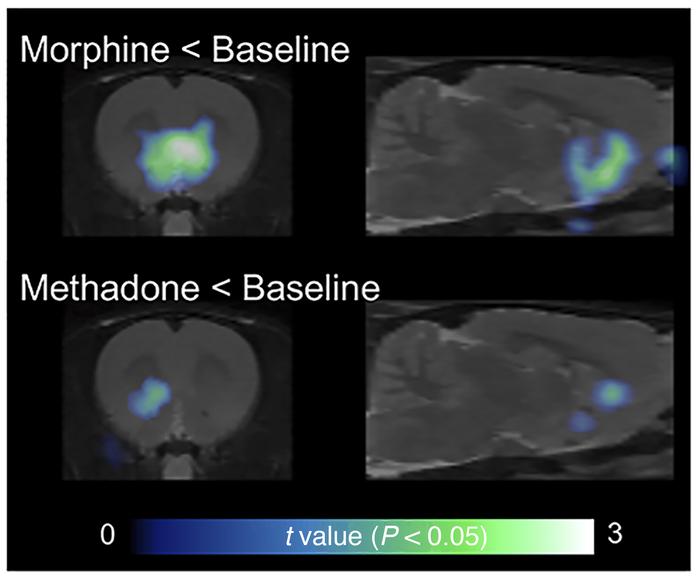Citation Information: J Clin Invest. 2019;129(7):2730-2744. https://doi.org/10.1172/JCI126912.
Abstract
Identifying nonaddictive opioid medications is a high priority in medical science, but μ-opioid receptors (MORs) mediate both the analgesic and addictive effects of opioids. We found a significant pharmacodynamic difference between morphine and methadone that is determined entirely by heteromerization of MORs with galanin Gal1 receptors (Gal1Rs), rendering a profound decrease in the potency of methadone. This finding was explained by the weaker proficiency of methadone in activating the dopaminergic system as compared with morphine and predicted a dissociation of the therapeutic and euphoric effects of methadone, which was corroborated by a significantly lower incidence of self-reports of feeling “high” in methadone-medicated patients. These results suggest that μ-opioid–Gal1R heteromers mediate the dopaminergic effects of opioids. The results further suggest a lower addictive liability of some opioids, such as methadone, due to their selective low potency for the μ-opioid–Gal1R heteromer.
Authors
Ning-Sheng Cai, César Quiroz, Jordi Bonaventura, Alessandro Bonifazi, Thomas O. Cole, Julia Purks, Amy S. Billing, Ebonie Massey, Michael Wagner, Eric D. Wish, Xavier Guitart, William Rea, Sherry Lam, Estefanía Moreno, Verònica Casadó-Anguera, Aaron D. Greenblatt, Arthur E. Jacobson, Kenner C. Rice, Vicent Casadó, Amy H. Newman, John W. Winkelman, Michael Michaelides, Eric Weintraub, Nora D. Volkow, Annabelle M. Belcher, Sergi Ferré
Graphical abstract



Copyright © 2025 American Society for Clinical Investigation
ISSN: 0021-9738 (print), 1558-8238 (online)

